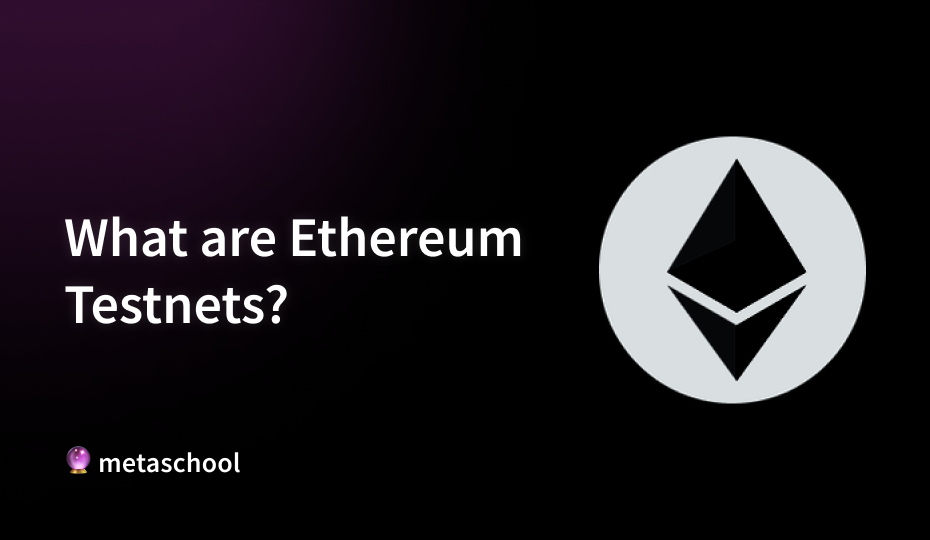Table of Contents
Ethereum testnets play a crucial role in the blockchain ecosystem, serving as experimental environments where developers can test their decentralized applications (dApps), smart contracts, and protocol upgrades without risking real assets. These networks mirror the Ethereum mainnet’s functionality while using test tokens that hold no real value, creating a safe space for innovation and experimentation in the Web3 world.
What Are Ethereum Testnets?
Ethereum testnets are alternative blockchain networks that run parallel to the Ethereum mainnet. They implement the same protocol rules and mechanisms as the mainnet but operate in a sandbox environment. This setup allows developers to deploy and test smart contracts, conduct integration testing, and verify protocol upgrades before launching on the mainnet, where mistakes could prove costly.
Key Features of Testnets
Ethereum testnets offer several key features that facilitate development:
- Test Ether (ETH): Developers can obtain free test tokens through faucets to simulate transactions and interactions without financial risk. This allows for testing under real-world conditions.
- Network Compatibility: Testnets support the same tools, programming languages, and consensus mechanisms as the mainnet, ensuring a seamless transition when deploying to production.
- Development Tools: They integrate with popular development environments like Remix and Truffle, providing debugging tools and access to block explorers for transaction monitoring.
Popular Ethereum Testnets and Resources
Sepolia
- Network Status: Sepolia Explorer
- RPC Endpoint:
https://rpc.sepolia.org - Chain ID: 11155111
- Faucets:
- Alchemy Sepolia Faucet
- Infura Sepolia Faucet
- Block Explorer: Sepolia Etherscan
Holesky
- Network Status: Holesky Explorer
- RPC Endpoint:
https://ethereum-holesky.publicnode.com - Chain ID: 17000
- Faucets:
- Holesky Faucet
- Block Explorer: Holesky Etherscan
Development Tools and Resources
IDEs and Frameworks
- Remix IDE
- Web Interface: remix.ethereum.org
- Features: Browser-based IDE with built-in compiler and debugger
- Documentation: Remix Docs
2. Hardhat
- GitHub: github.com/nomiclabs/hardhat
- Documentation: hardhat.org
- Features: Development environment, testing framework, and task runner
Web3 Libraries
- Web3.js
- GitHub: github.com/web3/web3.js
- Documentation: web3js.readthedocs.io
2. Ethers.js
- GitHub: github.com/ethers-io/ethers.js
- Documentation: docs.ethers.org
Use Cases for Testnets
Testnets serve multiple purposes in the development process:
- Smart Contract Development: They allow developers to test contract functionality, debug code, optimize gas usage, and verify security measures. Learn to build on Ethereum with us through our Ethereum Courses.
- dApp Testing: Developers can ensure proper user interface integration, validate transaction flows, and optimize performance through rigorous testing on these networks.
- Protocol Development: Testnets enable testing of network upgrades, implementation of new Ethereum Improvement Proposals (EIPs), and analysis of network behavior under various conditions.
Best Practices for Testnet Usage
- Choose the Right Testnet
- Consider the specific needs of your project
- Evaluate network stability requirements
- Check community support and resources
- Assess compatibility with your tools
2. Resource Management
- Use faucets responsibly
- Clean up unused contracts
- Document testing procedures
- Monitor gas usage patterns
3. Testing Strategy
- Start with local networks (like Hardhat or Ganache)
- Progress to public testnets
- Conduct thorough integration testing
- Simulate edge cases and failures
Future of Ethereum Testnets
As Ethereum continues to evolve, testnets remain crucial for maintaining network security and enabling innovation. The transition to Proof-of-Stake has brought new considerations for testnet operations, particularly around validator participation and network security. Future developments may include:
- Enhanced simulation capabilities
- Better integration with development tools
- More sophisticated testing environments
- Improved resource distribution mechanisms
- Greater focus on scalability testing
Conclusion
Ethereum testnets are fundamental to the blockchain development ecosystem, providing essential infrastructure for testing and innovation. By utilizing the resources and tools listed above, developers can create more robust and secure blockchain applications. The comprehensive testing environment provided by testnets, combined with the right development tools and community support, enables developers to build and deploy successful decentralized applications on the Ethereum network.
Remember to always verify the latest information about testnets, as network parameters and resources may change over time. Stay connected with the Ethereum developer community for updates and best practices in testnet usage.
Frequently Asked Questions(FAQs)
How do I get testnet tokens?
Testnet tokens can be obtained through faucets—web services that dispense free tokens in exchange for wallet addresses. You can check out Alchemy Faucets page
What are Ethereum Testnets?
Ethereum testnets are used by developers to safely test smart contracts and dApps without financial risk. They allow for experimentation with new features before deploying them on the mainnet.
Which testnets should I use?
Currently, Sepolia is recommended for most application development needs. Holesky is also available for testing protocol upgrades.
Are there any risks associated with using testnets?
While there are no financial risks since testnet tokens have no real value, developers should ensure they do not use mainnet accounts on testnets due to security concerns.
